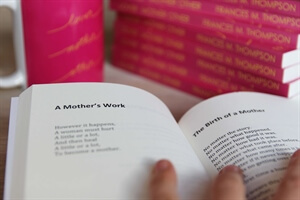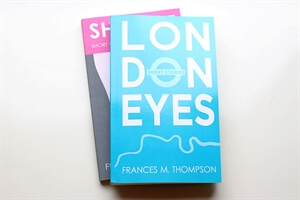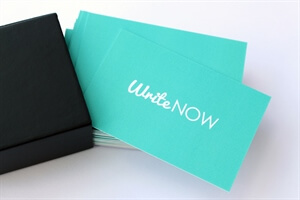How to Write a Book: Part Three - Writing a Book or Story Outline
Welcome to the third part of my How to Write a Book series documenting all the steps I take in writing a book I'm currently working on. Today I'm sharing what I did when writing my story outline. If you'd like to go back a few steps, the first part of this series tackled coming up with a story idea, and the second part was all about story development. Be sure to check out this tag to find all the posts in this series, and you can find lots of writing advice on my blog here.
What is a story outline?
A book or story outline is essentially a plan. Another word that would describe it accurately is a plot. When you work on fiction, when you create a story outline, you are putting the pieces of a plot together, i,e. you are filling in all the stages of a story's development. When you write a book or story outline, you are effectively creating something that will then guide you on to writing the book. Now, how you do this and what it looks like is going to be different for every writer. Writing a book outline is also not an essential part of the writing process, indeed for some people don't bother and would rather just dive straight into writing a first draft, and that can work really well for many authors and writers. Personally, I can do this when working on a (very) short story, but I have found for longer pieces of fiction, including the novella I wrote The Wait and its sequel which I'm currently edition (slowly!) then an outline is really helpful in keeping me on track as it prevents me from falling down plot holes.
Before we go any further, we should perhaps pause and acknowledge that a story outline is typically going to relate to a fictional piece of work, i.e. something that tells a story, while a book outline can be for a book about anything, i.e. a work of non-fiction or fiction. While I'm going to document here writing the outline for a novel (so a story outline), I hope the tips I share below can be applied to a non-fictional book outline too.
How you write an outline, what it looks like and how detailed it is or isn't, is entirely up to you. There are no set ways you have to write a book or story outline. Some people use note cards and write a chapter or scene or key event on each one, other people write a chapter breakdown, and other authors may even write a very sketchy first draft (e.g. "MC arrives in London. MC is sad/scared/happy because XYZ. MC meets Other Character at..."). Your book outline can be very visual and non-linear, i.e. a brain storm or flow chart. You can create an outline on paper, on your computer, on a white board or on a series of post-it notes stuck on the wall. You can write a story outline however you want to as long as it is most helpful or natural to you. There are also outlining techniques that you can learn. I've personally not read any of these books but the ones I hear recommended most in the writing circles I dip in and out of are The Snowflake Method, Structuring Your Novel or Outlining Your Novel by K.M. Weiland and Write Your Novel from the Middle. I've also heard people recommend Save the Cat for writing fiction, even though it's target market is for those writing screenplays. For non-fiction, I've not had any personal recommendations for books that may help you outline your book, but this book seems to be a very thorough read on the topic.
It's also important to remember that (again!) your story outline is not set in stone. You can always change or deviate from any plan you come up with for your book's plot. The purpose of an outline is not to restrict what you write later on but to aid and assist it. It may happen that while you write your book outline you see things that you don't like or don't think will work, and you then have to go back a few steps to changing your original idea or maybe reviewing your story development notes. All of these things are really healthy and helpful things to do at this stage of writing a book. There are also no rules on how much outlining of a story or book you need to do. You can spend weeks and weeks on this phase, or you can just come up with a plan in a couple of hours; again it's whatever works best for you, or feels right (and I talk a bit more about this "feeling" below!) and I dare say that only experience and practice will inform you what is a good amount of time to spend writing a book outline. That said, it can of course also depend on the project and it's possible, or even likely, that for some pieces of work you will need to spend weeks writing a book outline, while for others just a half page of notes will do.
For the rest of this blog post, I'm going to return to my own experience which is at the heart of the How to Write a Book series of posts. So now let me share how I created a story outline for the novel I'm currently writing.
Writing my book's story outline
I effectively created a chapter AND scene breakdown for my story outline. I wrote both at the same time because each of my chapters is going to be made up of three separate scenes. It all came to me very quickly - under three hours in total - and while I'm fairly sure I'm going to tweak it a lot or change much of it completely when I start writing, writing this outline helped me to both plan and structure the plot, so the outline is not just a breakdown of what the plot is going to be but also what the actual book will read like, because of course stories can be told in a non-chronological way. This is one important thing to remember - and it's why many authors use note cards or post-it notes - so once you come up with an A to B plot, you can then actual move around the order of how the story is told. This can happen as you plot the story, or it can happen much later once you have actually written the bulk of the story. Try, for now, to just focus on all the essential parts your book or story has to cover, and worry later about the order a reader finds it in. When it comes to non-fiction works, you can also apply this, in that you can brain dump individual sections you want to include in your book - putting titles or topics on post-it notes - but then you can come up with the order at a later phase in the outlining process.
I wrote my book's outline digitally in a note on Evernote, which is where I do nearly all my story development, planning and even writing of the first draft, or odd scenes or conversations from the story that come to me. I will eventually move all this work over to Scrivener (which I highly recommend to all writers and it's available for Mac or for Windows) but the main reason that I use Evernote at this stage is that I have access to it on both my phone and my laptop, and the versions are synced, so if I have a spare ten minutes but only my phone on me I can go into this note and just add a few notes or even write one of those scenes that speak to me out of nowhere. (I hasten to add this doesn't happen all the time, but it does happen the more I think about the story, so always, always allow your mind to wander thinking about your characters!).
At the moment my novel is actually going to tell three different stories, all relating to the same main character (MC). Each of the stories takes place chronologically but at a different stage in her life. As I wrote the chapter and scene breakdown as my plot outline, I found myself wanting to tell a piece of each story in each chapter, meaning each chapter is made up of three scenes, all taking place at different times. Each chapter outline looks something like this:
Chapter One
Scene 1 - Present - MC does something interesting.
Scene 2 - Past Past - MC is quite a bit younger and still does something interesting.
Scene 3 - Past - MC is older but not yet in the present, and she does something interesting.
Obviously, I've added in more detail about the things MC does, or feels or experiences but maybe one day you'll want to read this book so I'm going to keep the details quiet for now. Subsequent chapters then also have three scenes which pick up the action from where the previous one left off. And I was then able to tell each of the stories scene by scene for a (current!) total 23 chapters, although I will say that the last two chapters deviate from this structure for reasons the story will reveal!
I want to stress like I did in previous posts in this series, the ease and speed of this outlining process was highly unusual for me. Previous attempts to plan or outline have nearly always ended unfinished or half-cooked, with huge chunks missing in the middle. The reason this time is different, I think, is two-fold. Firstly, I spent a lot of time thinking about this book and developing this story idea, and before you think that means pages and pages of notes, I actually think 80% of this was done mentally, just in my head, letting the idea "brew" over a period of months, if not a year. Secondly, I think I finally can thank the years of practise and time spent attempting to plan or outline. While these didn't always result in carefully crafted plans I stuck to in order to finish a novel (you can read my reasons why I haven't written a novel yet here) they have taught me A LOT. This lesson in itself is very enlightening. We really can't put enough value on our perceived failures in terms of what they teach us and what they can then lead us to go on to do.
That's not to say that the outline I have written is perfect or comprehensive or is a blueprint for what the final book will read like. However, it is going to help me write my novel because it ticks a number of very important boxes - things I know I have struggled with in the past - as listed below:
- I know what I'm writing next at any given stage of the book, or alternatively, I can jump from scene to scene to write things in any order I want. That's quite exciting!
- I have included some key plot points both from a story development angle, but also from a "keep the reader interest" point of view.
- I know what tense I'm going to be writing in (present and past, FYI).
- I have started to assemble a list of characters to be fleshed out.
- I know more about my MC, and importantly I am building a strong idea of her motivations and goals.
- I know more about her physical and emotional journey.
- Even if I don't stick to the three-scene order for each chapter - maybe I will later want to bundle the scenes altogether and have three separate stories told in three separate parts - I now know what those stories are, or at least I have a good idea.
- I have a beginning that (I think!) is engaging, interesting and will (hopefully!) pull the reader into the story.
- I have a middle that doesn't dip (definitely a problem I've had before with previous stories).
- And I have an ending that ties up (most!) loose ends and feels satisfying to me at this stage... BUT it is not set in stone, at all, and the plot is still such that a completely different ending can take place.
Writing the chapter breakdown as my story outline felt like I was ready to start writing, and it gave me a huge rush of energy and enthusiasm to do so, however, I am being a little strict with myself and I now want to spend some time on character development and answering a number of unanswered questions that popped up during the outlining process. This leads me to say, don't worry about the (possible flood of!) unanswered questions that your outline may not be able to answer. The outline is not the full, complete, bulletproof story you will write. Your outline is a guide, or a map, and when we use a map we do not know where everything is or what everything looks like until we have done the same walk a number of times, and this will also apply to this story. It will take several drafts, re-writes and edits before you have all the answers (and even then nothing is guaranteed) so make a note of unanswered questions, but do not see the outlining stage as the time to answer them.
Now let me share some more tips about writing your book or story outline.
Tips for coming up with a book or story outline
Drawing on the experience I talk about above, and from what I've learned over the years (including reading countless articles and blog posts about writing a story outline) these are some tips I think will help you approach the outlining phase, even if it's your very first time.
First be sure that you've spent some time really working on story development. (You can go back to this post to follow my advice for this). This will hopefully mean you already have a strong idea about what the story is going to look like, with some events in mind and it's these that you can begin to flesh out or build upon for your story outline. If all you have for your story is "boy meets girl and they have to save the world" or "a book about how writing makes you happy" (one of many genuine ideas I have had and just started writing without planning - which ironically didn't make me that happy!) then you will struggle to put together an outline or a plan for writing a 60,000 (or more!) word book about this - unless you really, really like writing by the seat of your pants (which is totally okay too, but it's never worked that well for me!).
Start writing down what you do know. It's hard to define if this happened during story development or at this outlining stage, but I actually started writing my outline by writing a synopsis in a few sentences, this included the key events defining the beginning, middle and end of just one of my character's storylines - the Present story. I then built on this by adding in a few more sentences about her relationships, her emotional journey and the themes of the book, which I'd already explored in story development. It then struck me that some background to this would be helpful (for me and the reader!) and that's when I started to think about flashbacks and so I thought about how the opening chapter could be three key scenes from her life, all pivotal events effectively, but how different they would be and how jarring or arresting and hopefully intriguing this would be for the reader. That was how I came up with the three scene structure and I then thought about what it would look like if I stuck to that for the rest of the book.
When it comes to non-fiction, this is a good time to start listing everything you want to include in your book, grouped together in similar themes or topics. I think using post-it notes or note cards would work well at this stage because you can then move them around to find an order that also works, but at this early stage you don't need to worry about that too much, just keep it in mind that the order and structure of your book can be changed later, it's still important to know what you do know.
Now explore what you don't know. Again, if you're writing fiction, this doesn't mean answering every question that pops up (What are the characters wearing? What's their house like? Where did they go for their summer holidays as a child?) but rather how does your MC get from A to B to C to D. Think mostly about events and experiences that progress the story or their journey, i.e. the things that have to or can take place in order to get to the end of the book. Just thinking about this at this stage - and seeing what you do know written down on paper or in a document - may help you see how you can fill in gaps, it may even give you some gap-fillers that you can write down, but it's also okay for you to acknowledge the gap, leaving it open, and then moving on to finding the next gap. Finding gaps is the only way you can fill them. It's very possible you will need to go away and spend some more time thinking about how to bridge this gaps, or you can jot down some potential ideas, leaving future you with some to choose from. My only hesitation with the latter approach is that if these events decipher what happens later in the story, you may find yourself having to change more then just that one event. However, I hasten to add that this is a common occurrence in fiction writing so don't be afraid of it just be prepared to deal with it.
If you're writing a non-fiction book, finding gaps in your outline is just as important. They may be knowledge gaps that you can then go away and research, or they may just need a little extra thought and mental editing, i.e. deciding what's really important to be included, or not.
Don't worry about structure too much, focus more on covering all the key points in your outline. With both fiction and non-fiction books, it may feel like an outline needs to decide exactly how a book begins, develops and ends. But as I've said many times above, while this is a helpful thing to have, the structure or order of your book can change - indeed an editor may see a more interesting structure or order - but this may not necessarily change the actual content you create. For example, if later on I want to swap from flashbacks to three separate parts, I should be able to do so relatively easily because I still have the plot for each of the three stories mapped out. The same can count for topics in a non-fiction book, once the key messages and information are written, the order they are written in can be changed at a later date, if it serves the overall purpose of the book better. Yes, this will require some thought, new planning and several hours (or days or weeks!) of editing, but it can still work and the outline you create now and work with is still useful and valid RIGHT NOW.
Try different outlining methods. If you're a visual person, you may find mind-mapping or even using outlining software to create a very visual outline more useful than just writing a chapter breakdown in chronological order. If you're a bit of both you may want to consider drafting linear timelines on a long piece of paper or on a whiteboard, but I would stress again that if you can use things that can be moved around (i.e. post-it notes) that will save you time having to write out the same key events, pieces of information or plot points again and again. Experiment using paper and digital documents. Find what works best for you and don't worry or question what it looks like. Your outline could read like a very dry, plain text version of the book you're going to write ("The cat sat on the mat. There was a fire. The cat got up.") or a To Do List that may even prompt you to answer some of those unanswered question. ("MC gets on train. Where? Train crashes. How? Goes into coma. For how long? Wakes up in hospital. When? MC is in different body. Whose body?") . It's also completely fine for your outline to look like mine, essentially a chapter or even a scene breakdown spoonfeeding me what I have to write next,
Do a little research on outlining techniques if all of this feels too foreign or frightening right now. If you're new to writing and this is your first book (yeah! Good on you!) Here are some links to some useful articles or resources on outlining methods you may want to investigate further: This is a great video on mind-mapping and features mind-mapping software though it can also be done on paper just as easily. Here is a blog post on creating a plot timeline, again using a certain kind of software, but again the tips can apply to work done on paper. Many of the articles on chapter breakdowns I found related to writing a chapter synopsis for submitting a novel to an agent, however, this one still had valid tips on how to use this technique (like I am) to help you write your book, and it includes notes for non-fiction and fiction authors. Scene breakdowns are more often used for scripts or screenplays, but I still think they're a valid way to plan a story. This post really explains the advantages of writing scene lists or breakdowns and includes some examples of very famous authors' scene breakdowns. This article then takes it a bit further by talking about doing a scene list using an Excel spreadsheet, and it makes lots of references to the Snowflake Method, which is one of those books I have heard highly recommended (though haven't read myself!).
You may also hear or see other authors discuss writing "story beats" for their books, and this is a little different from writing chapter breakdowns or scene breakdowns but definitely is very similar. As this detailed article on story beats explains, it's essentially writing down each and every "smallest unit", so it goes into more detail than chapters or scenes, i.e. a scene can be made up of multiple "beats", and a chapter can be made up of multiple scenes (but again remember these and all writing rules, in my opinion, are arbitrary and made to be broken!). I first heard about writing beats from the team behind Sterling & Stone on their Self-Publishing Podcast and this is the episode they discuss it in depth - if you're unfamiliar with these guys, please be warned they use fruity language and also can go way off topic very easily, but their conversation on beats which starts around 31 minutes in, is really interesting and their approach is definitely one that works as they write (and sell!) a LOT of books and quickly.
You don't have to write just one outline! The chances are - especially if you're quite new to writing a book - that you will make several attempts at writing a book outline before one sticks. This is a good thing and you should embrace it. Try different methods and assess the merits of each,, Use one outline to write another with more detail. Maybe take this as far as I have to a chapter or scene breakdown. play around with the plot or book's contents until it feels really good to you. "Good" to me in this context is a weird sensation of feeling satisfied, excited and energised to actually start writing the book. In other words, if an outline doesn't make you feel like it's going to help or inspire you to write the book, you may want to take a break and try again another time... Like with all stages in writing a book, outlining will take as long as it takes. Don't panic if it takes longer than you would like. By the same token, don't overthink it if it comes to you quickly and easily. Every writer is different and you have to respect your own journey and processes, and ideally, enjoy learning about them and doing them!
Ask yourself the following questions to check if your outline is finished:
- Do you know what you're writing next (or what needs to be written) at any given stage of the book?
- Have you covered all or most of the key plot or information points you need to include in your story/book? Are these enough to keep your reader (and you!) interested?
- Do you know what tense you're going to write the book in?
- Do you now have the beginning of a list of characters?
- Do you feel you know your MC/s better? Does your outline cover their emotional and physical journeys?
- Do you see a beginning, a middle and an end for your book? Are they all equally interesting?
- Does your planned ending feel satisfying enough for you?
- Do you accept that this outline is your map, but you can actually choose any number of paths later on?
- Do you feel you are now ready and excited to start writing your book?
Congratulations! You just wrote a book outline!
Next in the How to Write a Book series I'll be sharing my experience of character development, including some of the character building techniques and questions I have employed to flesh out these people that are going to tell the story, and hopefully, maybe, possibly get under a reader's skin, in the best possible way!
If you'd like to share or save this post, here's an image you can pin:


Frances M. Thompson
Find Frankie on Facebook, Twitter, Instagram, Pinterest, and Google+.

 On Writing: My Writing & Publishing Plans for 2023
On Writing: My Writing & Publishing Plans for 2023_x300.jpg?v=1) On Writing: The Year I Decided to Write for My Life
On Writing: The Year I Decided to Write for My Life On Writing: Best (& Easiest!) Creative Habits All Writers Should Try
On Writing: Best (& Easiest!) Creative Habits All Writers Should Try On Writing: How to Earn Money by Writing Stories
On Writing: How to Earn Money by Writing Stories On Writing: What Are The Different Types of Editors?
On Writing: What Are The Different Types of Editors? About the Blog & Frankie
About the Blog & Frankie Welcome to My Amsterdam Travel Blog!
Welcome to My Amsterdam Travel Blog! Welcome to My Luxury Family Travel Blog!
Welcome to My Luxury Family Travel Blog! Welcome to My Writing Blog!
Welcome to My Writing Blog! Lover Mother Other: Poems - Out Now!
Lover Mother Other: Poems - Out Now! I Write Stories That Move You
I Write Stories That Move You Order WriteNOW Cards - Affirmation Cards for Writers
Order WriteNOW Cards - Affirmation Cards for Writers Work With Me
Work With Me